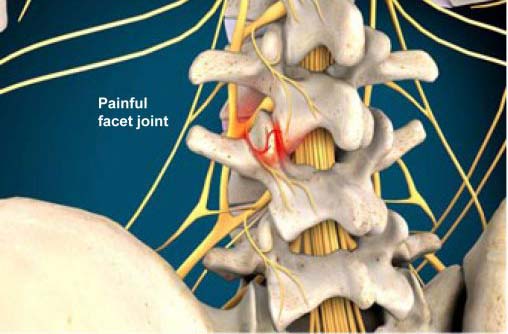Spinal discs, comprised of a soft inner core with a tough outer wall, are located in between the spinal vertebrae. They help keep the spine more flexible, but over time, these discs begin to break down. This is a natural part of the aging process; however, pain should not accompany this breakdown. If pain is present, this may indicate degenerative disc disease.
Symptoms of Degenerative Disc Disease
- Pain that is located in the lower back, upper thighs, or buttocks
- Pain is typically intermittent, but can be severe
- Worsens when sitting for long periods of time
- Numbness and tingling in extremities
- Increased pain when lifting heavy objects
- Pain improves when changing positions or lying down
Two Causes of Degenerative Disc Disease
Dry out — Dry out occurs when spinal discs become thinner and lose water. This water loss results in less cushion between the vertebrae and ultimately causes pain.
Cracks or Tears — Tears in the outer walls may be caused by stress or minor injuries. These tears are located near the nerves in the outer wall, and the breakdown of the outer wall may cause the discs to push through the tears. As this progress, a disc may bulge. This is also known as a slipped or herniated disc.
Treatment Options Include:
Over-the-counter or prescription medication — To reduce pain and inflammation.
Physical therapy — This helps to strengthen the muscles in the back or neck.
Steroid injections — These are administered to reduce inflammation.
Discectomy — This treatment option is usually reserved for more severe cases. The removal of the injured part of the disc helps to remove the pressure from the nerves.
A medial branch block is a diagnostic procedure that is used to identify a painful facet joint. Facet joints are located between the spinal vertebrae. The joints allow for flexibility in the spine. In preparation for the procedure, a local anesthetic is injected into the skin and tissue surrounding the affected facet joint. A needle, containing a contrast solution, is inserted into the skin. This solution helps the physician view X-ray images through a fluoroscope. The physician then attaches a syringe to the needle. This syringe contains an anesthetic that is injected around the medial branch nerves. This anesthetic temporarily blocks the sensation present in these nerves. A physician will administer a more long lasting anesthetic if pain subsides. If you do not experience pain relief, the physician may attempt to identify the affected facet joint by testing nearby joints.
If you are struggling with spinal pain, consider a medial branch block diagnostic procedure. Dr. Stephen Courtney, a board certified orthopedic spine surgeon, has improved the quality of life for patients all over the country. He completed medical school at Louisiana State University as well as a residency at Texas A & M University Medical Center. He is currently a member of the Texas Spine Society, the North American Spine Society, and the American Academy of Orthopedic Surgeons. He has attended many conferences and is committed to technological advancement. If you have questions or would like to schedule an appointment, we review and accept patients’ requests on a 24/7 basis.
Make an Appointment today!

